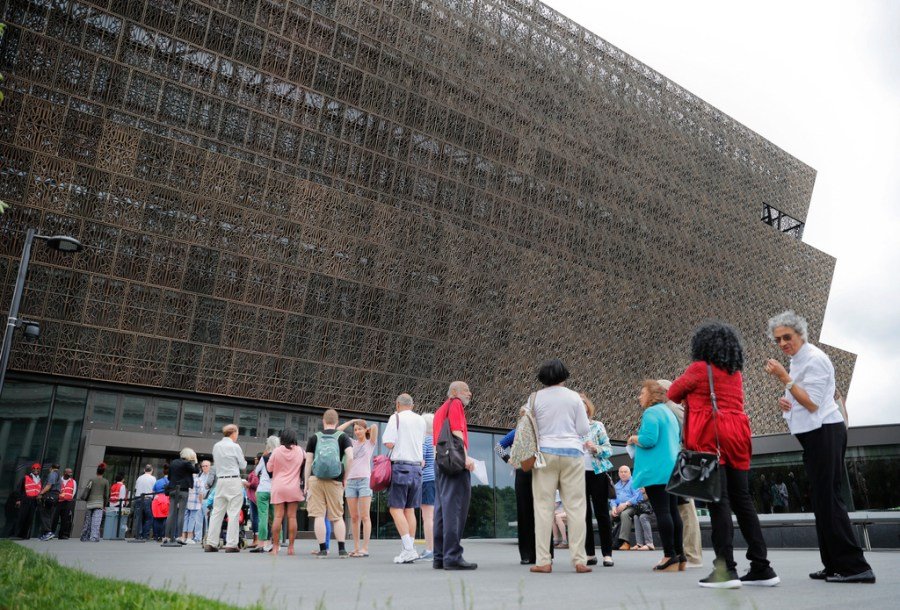
I was not surprised by President Trump’s Truth Social post that the Smithsonian and other American museums are excessively focused on “how bad slavery was.” Trump’s post is consistent with MAGA’s triumphalist insistence on eviscerating critical analyses of America’s problematic race relations and history from the nation’s schools, cultural institutions and mass media.
Without endorsing racial bondage, his call encourages MAGA’s white supremacist elements and discourages efforts to address racial disparities relating to slavery’s long-term constraints on Black progress.
As someone who has long studied, taught and written about the American South and slavery, I am appalled. Trump’s position trivializes the injustices and horrors of enslavement, implying they barely merit mention within America’s historical narrative.
I propose, counterintuitively, to rebut Trump’s messaging by looking microscopically at the moment in the plantation calendar when slaves supposedly were treated best. By illuminating how horrific racial bondage was even when legend says enslavers were at their most humane, we can grasp the ahistorical absurdity of Trump’s position that museums move on.
That time was Christmas. There is a near-consensus that slaves were happiest, if you can say such a thing, over the holiday. Supposedly, starting Christmas Eve, slaves not only were excused from working for up to a week, but masters put whips aside, gave them amazingly generous presents, threw them sumptuous feasts and dances, and allowed them to marry and travel anywhere nearby they wanted.
The trouble is this stereotype derives largely from memoirs of post-Civil War “Lost Cause” southern writers who reimagined slave holidays to justify southern secession and the Confederacy. Such writings overlooked the vast profits accruing to slaveholders from coerced labor and sometimes claimed that slaves had it better than masters and lacked interest in freedom.
Consider this racist passage from an autobiographical vignette by LaSalle Pickett (the widow of Confederate general George Pickett: “In the Southern heart, the sacred Christmas-tide is linked with memories of the old-time plantation, the merry-making of the affectionate, simple-hearted colored people to whom the Christmas holidays were the great festival of the year, the gratitude which lit up their dusky faces as they received their presents.”
Here’s my rebuttal, based on pre-Civil War documents like newspaper and magazine articles, published autobiographies by escaped slaves, travel narratives by European and northern observers who passed through the South, and the letters and diaries of plantation owners and their overseers.
First, many slaves had short Christmas holidays of one to three days, or no vacation at all. Second, physical and verbal abuse of slaves continued over the holiday, sometimes to the point of sadism. My research uncovered a hotel landlord who pummeled a Black servant youth to death for spilling whale oil on his daughter’s silk dress, and a master who lashed a nine-year-old boy to the point that he bled from his mouth because he had been negligent in tending his owner’s cows.
The sadism did not always come in the form of corporal punishment. Frederick Douglass, in his “Narrative,” related that masters encouraged slaves to get drunk over Christmas so that in the filth of their inebriated “wallowing” they would become demoralized and conclude they were unfit for freedom.
Third, slave trading, the auctioning of slave bodies, and the breaking up of slave families continued over the holiday. The sold slave Louis Hughes, who arrived at his new “home” in Pontotoc, Miss., on Christmas Eve, 1844 after a long overland journey, recalled, “Boss took me into the house and into the sitting room, where all the family were assembled, and presented me as a Christmas gift to the madam, his wife.”
In some households, because enslaved people were legal property, masters and mistresses even transferred to their youngest children the ownership of youthful slaves (who would serve them once they got older) as holiday gifts.
And not all masters threw their coerced workers parties or were generous in their gifting. Most revealingly, not all masters allowed Blacks to roam over Christmas, given recurrent fears that slaves would capitalize on their lax supervision over the holidays by killing their masters or joining in a general insurrection to overthrow slavery entirely in North America. This is hardly evidence for later Lost Cause claims that all slaves loved their generous owners.
I would not expect Trump, a child of privilege who has mocked physically and mentally impaired people and minorities throughout his public life, to get any of this. If he did so, it would be a turn-off for his political base. But his vision for the Smithsonian is a red flag moment.
Robert E. May is emeritus professor of history at Purdue University. He is author of “Debunking the Yule Log Myth: The Disturbing History of a Plantation Legend” (Bloomsbury, 2025); and “Yuletide in Dixie: Slavery, Christmas, and Southern Memory” (Virginia, 2020).

